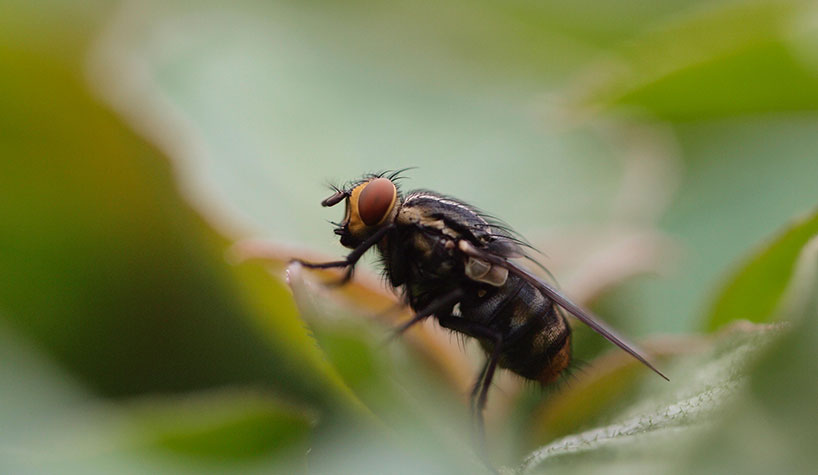PARSIPPANY, NJ—They are the uninvited guests at happy hour and, left unchecked, could be found crawling around F&B stations at hotels. As a result, hoteliers may experience a decrease in reservations, a damaged reputation and scathing reviews on travel websites. At the first sight of a potential pest problem, it’s wise to call in the experts.
“Begin by contracting with qualified, trained pest management professionals who can conduct thorough inspections of areas that may have conditions conducive to cockroach infestations,” said Nic Ellis, board-certified entomologist, Western Pest Services. “Following their inspection, they will share their findings with the hotel management team and work to develop the appropriate management plans—preventive or reactive—depending on the results.”
In a hotel, grab-and-go food areas are popular and could attract ants, roaches and flies, among other pests. They’re often unstaffed and remain stocked with food for many hours of the day.
“Items that are dropped by patrons will likely go undetected for several hours, providing a food source to cockroaches, rodents and flies,” said John Perrone, commercial account manager, Western Pest Services.
board-certified entomologist, Western Pest Services. “These areas should be inspected to ensure that pest harborage areas are eliminated and equipped with rodent traps and discreet insect monitoring. The hotel’s IPM (integrated pest management) plan should call for a regular inspection and treatment of this space by its pest management company.”
Pesky fruit flies are also a concern in these areas because of the abundance of sugars from fresh fruit and fruit-based beverages.
“House flies also present additional challenges because they have a wider range of food preferences. Mice and cockroaches living in the structural elements of the building may seek food and beverage spills,” added Ellis.
Cockroaches like to hide during the day and forage at night. Once an infestation is identified, the Western Pest Services team recommends getting to the root of the problem.
“The most important step in managing any cockroach infestation is to determine where they are hiding, and where they are emerging to forage,” said Ellis. “Then, those ‘harborages’ are treated with the appropriate measures. I recommend that hotel owners contact the trained and certified professionals to make professional assessments of roach hideouts and the best management tactics for them.”
Perrone added, “Cockroach elimination is most effective when varying treatment methods are employed, including baits, residual pesticides and insect growth regulators, in combination with housekeeping and exclusion methods.”
The saying goes, an ounce of prevention is worth a pound of cure. Perrone believes the prevention of roaches—or any pest—must always rely upon an IPM (integrated pest management) plan.
“IPM relies on excluding rodent entry and harborage, maintaining good housekeeping standards, monitoring for pest activity, and the use of regulated pesticides as warranted,” he said. “No hotel or foodservice professional should attempt the design or delivery of an IPM plan on their own; working with a licensed pest management professional will be the first step in prevention.”
Like flies to honey, pests are also drawn to a hotel’s happy hour.
“During a busy time like happy hour, it is not easy for the bar staff to maintain good housekeeping standards providing many areas where fruit flies like to feed and breed,” said Perrone. “This includes spilled juices, liquors and fresh fruit, which are all high in sugar, a natural attractant for fruit flies. This elevated busy time will also see an uptick in the doors being open, providing entry for house flies following the air pattern into the bar. The installation of air curtains, which will move air out of an open door, will aid in preventing flies from flying into the establishment.”
According to Ellis, the number-one rule of preventing a fly infestation of any type is to practice excellent sanitation to deprive flies of food, moisture and shelter: “For example, emptying trash cans and cleaning them thoroughly; keeping floors, sinks and bar tops clean of food and beverage debris; cleaning floor and tap drains; and routinely replacing drainage hoses,” he said. “Pest control companies can also provide very effective products for maintaining clean drains and trapping devices for reducing adult fly numbers.”
A fly-free environment will require the hotelier to be committed to resolving any structural or sanitation issues that are contributing to flies breeding in the space.
“This might include the repair of cracked tiles or grout lines, the water-tight sealing of floor/wall junctions, and the adherence to a strong set of sanitation principles,” said Perrone. “The use of enzyme cleaners, like Western OE-30, is fundamental in a great sanitation program. Hotels should be equipped with Insect Light Traps, properly positioned in all applicable areas, which will aid in trapping flies 24 hours per day. Trash areas should be kept as clean as possible, cleaning or replacing trash receptacles regularly. If indoor trash storage is required, the trash room should be temperature controlled, too.”
The Western Pest Services team urges hoteliers to think outside the box when it comes to ridding spaces of unwanted visitors. While working with a professional pest management company is critical, it is also important for sanitation and other operations processes to be taken into consideration.
“A sanitation plan should be written out and adhered to, focusing on cleaning several times throughout the day,” said Perrone. “Eliminating standing water throughout the hotel’s back of house, food areas and trash areas will also help. Any plumbing issues should be repaired. We recommend that foodservice areas are cleaned daily and that a floor dryer is used to quickly dry up excess water used in mopping. Periodically requesting the replacement or cleansing of trash receptacles from their waste management company should also be considered. Ultimately, if a pest professional is not partnering and making these recommendations, it may be time to consider working with another.”

